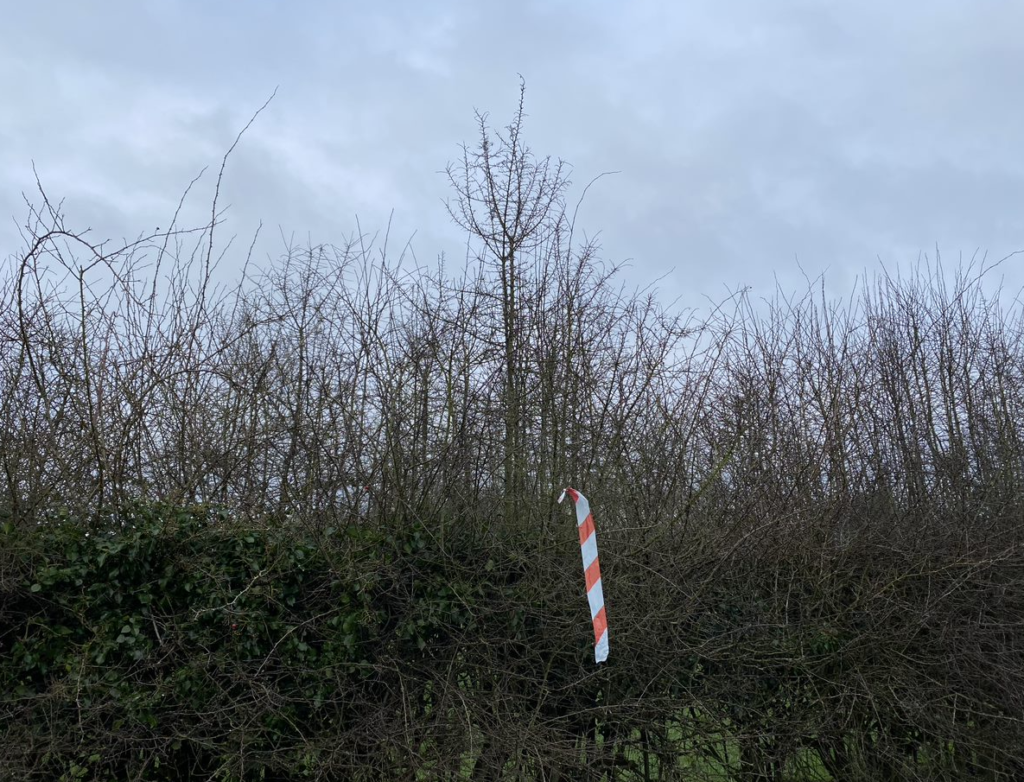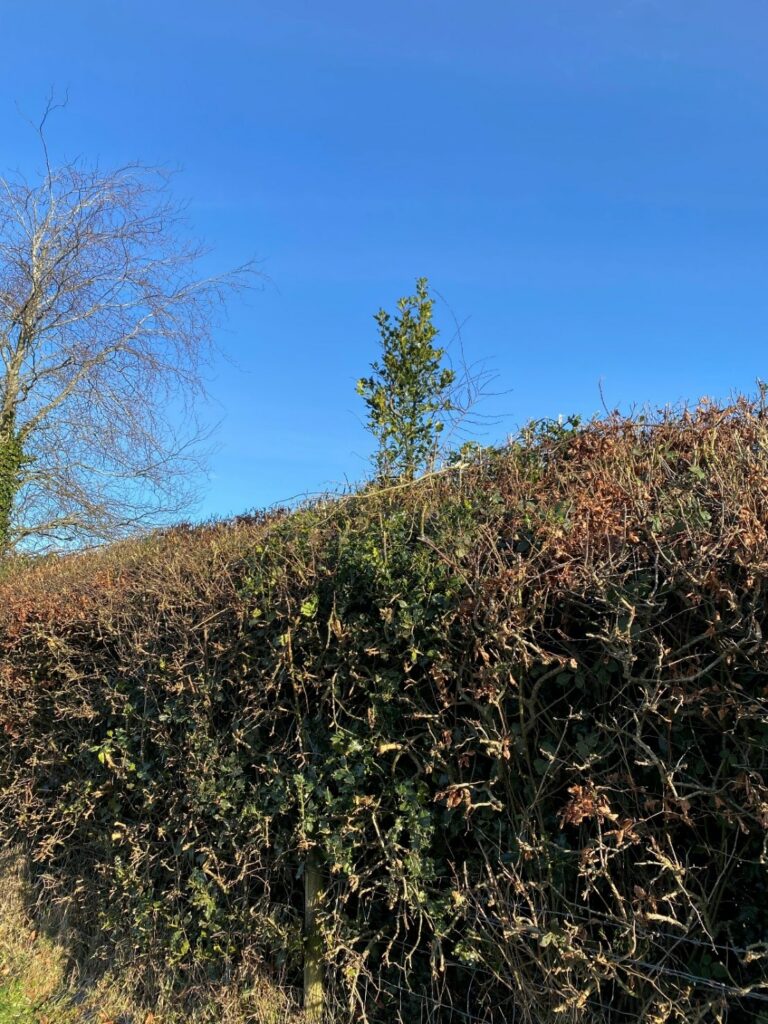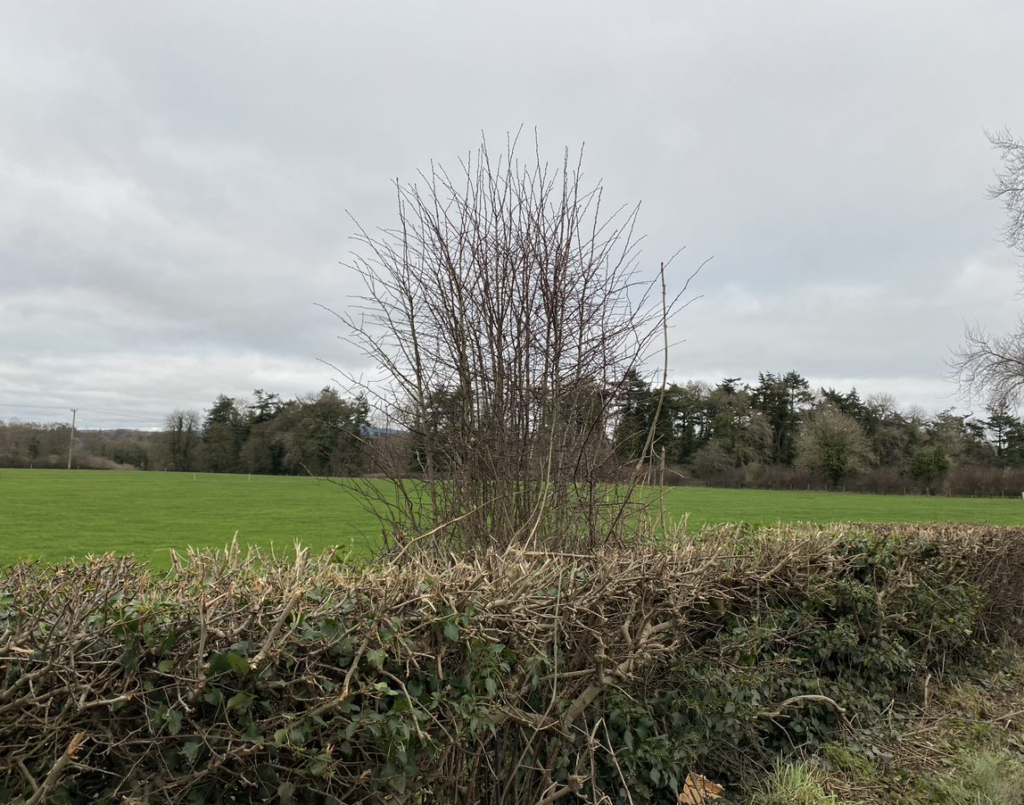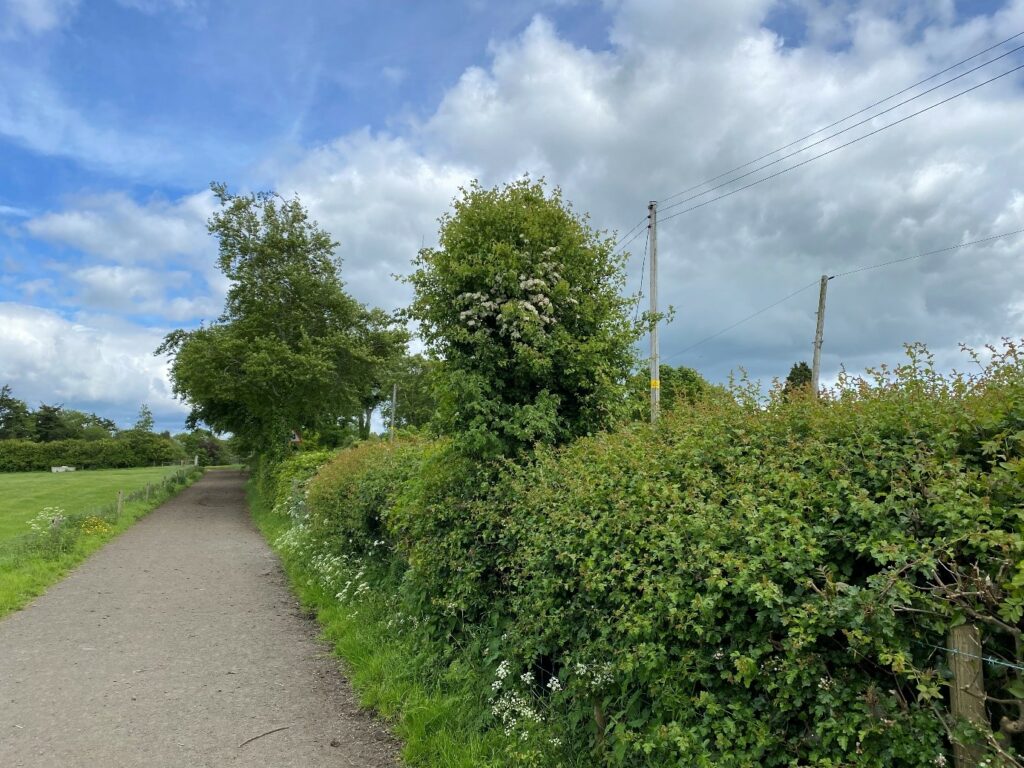Hedgerow Trees
Hedgerow trees are an important component of hedgerows across Northern Ireland. Together, the hedge and trees provide shelter, food, nesting sites, song posts and act as corridors between habitats. It is important to maintain existing trees and establish new ones. Unfortunately, many of our hedgerow trees are very mature with at risk Ash trees making up a high proportion. A baseline survey at one of the CAFRE farms identified that only 10% of the hedges had young trees to act as eventual replacements.
Road and Laneside Hedges
Where access and health and safety demand that hedges need to be cut more regularly hedgerow trees become even more important. Due to a tree’s three-dimensional structure the amount of food it can provide for insects is higher than that of a narrower hedge. Hawthorn, blackthorn, and willow are often undervalued as hedgerow trees but these smaller trees provide major pollen, nectar and berry resources as hedgerow trees growing up above laneside facing hedges.
How to establish trees into existing hedgerows
1. Planting into existing hedgerow gaps
Where there are gaps in existing hedgerows, tree whips can be planted. Depending on the height of the hedge, it may be beneficial to mechanically cut a larger gap in the existing hedge to maximise the amount of light getting to the new tree whip. The young tree must be appropriately protected from livestock using a tree guard and stake (Figure 1).


2. Uncut sapling shoots
Prior to hedgerow management, identify strong straight shots that are already growing within the hedge. Leave these shoots uncut to allow them to become fully-grown trees (Figures 3, 4, 5 and 6).




